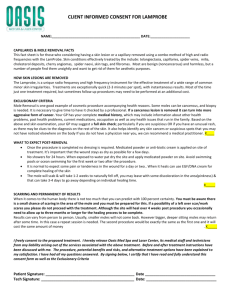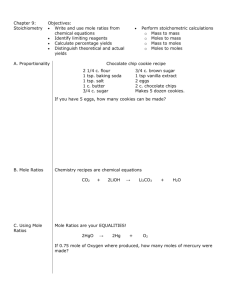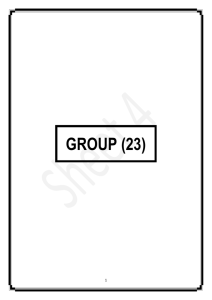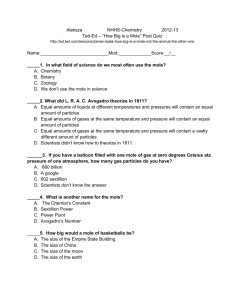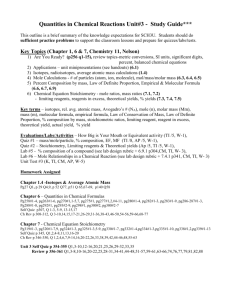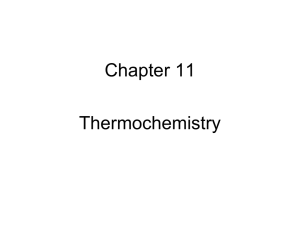Section 12.3 Limiting Reagent & Percent Yield Answer Key Michelle
advertisement
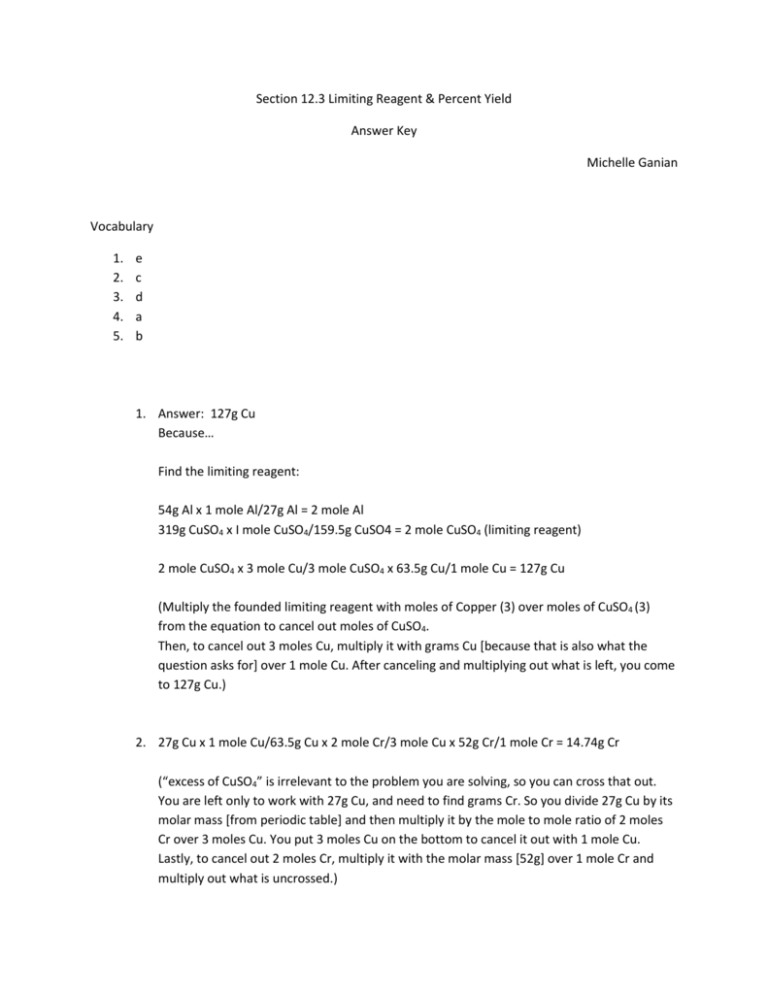
Section 12.3 Limiting Reagent & Percent Yield Answer Key Michelle Ganian Vocabulary 1. 2. 3. 4. 5. e c d a b 1. Answer: 127g Cu Because… Find the limiting reagent: 54g Al x 1 mole Al/27g Al = 2 mole Al 319g CuSO4 x I mole CuSO4/159.5g CuSO4 = 2 mole CuSO4 (limiting reagent) 2 mole CuSO4 x 3 mole Cu/3 mole CuSO4 x 63.5g Cu/1 mole Cu = 127g Cu (Multiply the founded limiting reagent with moles of Copper (3) over moles of CuSO4 (3) from the equation to cancel out moles of CuSO4. Then, to cancel out 3 moles Cu, multiply it with grams Cu [because that is also what the question asks for] over 1 mole Cu. After canceling and multiplying out what is left, you come to 127g Cu.) 2. 27g Cu x 1 mole Cu/63.5g Cu x 2 mole Cr/3 mole Cu x 52g Cr/1 mole Cr = 14.74g Cr (“excess of CuSO4” is irrelevant to the problem you are solving, so you can cross that out. You are left only to work with 27g Cu, and need to find grams Cr. So you divide 27g Cu by its molar mass [from periodic table] and then multiply it by the mole to mole ratio of 2 moles Cr over 3 moles Cu. You put 3 moles Cu on the bottom to cancel it out with 1 mole Cu. Lastly, to cancel out 2 moles Cr, multiply it with the molar mass [52g] over 1 mole Cr and multiply out what is uncrossed.) 3. Oxygen and Hydrogen are diatomic (O2 and H2) So 4 moles of oxygen gas is actually 8 moles of oxygen. 16 moles of hydrogen gas is actually 32 moles of hydrogen, but since water contains 2 hydrogens, we don’t need to split those up. But since there is only one oxygen in H2O, we do need to split up the O2 molecule so that we can have just one O. Thus, every two pairs of hydrogen (H2) go with every 1 of eight oxygens. You can then have only eight moles of water because there are 8 oxygen atoms (4 molecules unsplit), and your limiting reagent is oxygen. 4. So first you need to make the balanced equation of water. O2 + 2H2 = 2H2O You then use this equation for the mole ratios in your problem solving 24g H2 x I mole H2/2g H2 x 2 mole H2O/2 mole H2 x 18g H2O/1 mole H2O = 216g H2O 160g O2 x I mole O2/32g O2 x 2 mole H2O/I mole O2 x 18g H2O/ I mole H2O = 180g H2O So since the equation with O2 resulted in a lesser amount of grams at the end, it is the limiting reagent. 5. Cross out whatever was claimed excess. Since it is said that 137.1 g of water were collected after the reaction, that is the actual yield. It also says that 8.3 moles of H2S were consumed, meaning that those moles were used up, meaning that it is the limiting reagent. So you don’t need to use 137.1g of H2O in your equation because that is the actual yield, so you leave that alone. Start with 8.3 mole H2S and multiply it with 2 mole H2O over 2 mole H2S (from the equation). 8.3 mole H2S x 2 moleH2O/ 2 mole H2S x 18g H2O/I mole H2O = 149.4g H2O is your theoretical yield. So… Percent yield = 137.1g H2O(actual yield)/149.4g H2O x 100% =91.77% (Problems 6-8 are similar to problem #5)
